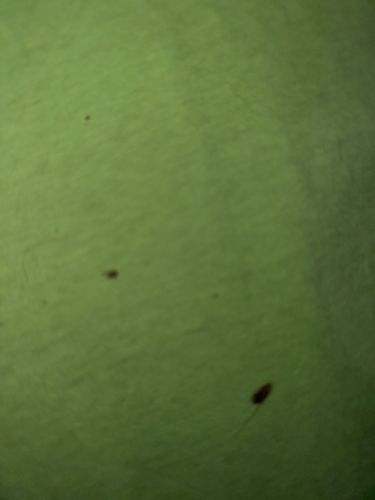Fly (General, likely a small species such as a fruit fly or fungus gnats)
Scientific Name: Unable to determine specific scientific name from the image due to blurriness and general appearance. Belongs to the Order Diptera.
Order & Family: Order: Diptera (True Flies); Family: Varies widely, examples include Drosophilidae (Fruit Flies), Sciaridae (Fungus Gnats), Muscidae (House Flies)
Size: Highly variable; from less than 1 mm to several centimeters. The specimen in the image appears to be small, likely a few millimeters.

Natural Habitat
Ubiquitous; found in almost all terrestrial and some aquatic environments, including homes, farms, forests, and urban areas. Habitat depends significantly on the specific species.
Diet & Feeding
Highly variable depending on the species. Many flies feed on decaying organic matter, nectar, plant juices, or animal blood. The specific item in the image is too blurry to identify dietary specifics for that particular specimen.
Behavior Patterns
Flies are typically active during the day, performing various behaviors such as feeding, mating, and resting. Many species are attracted to light. They undergo complete metamorphosis with egg, larva (maggot), pupa, and adult stages. Larvae of different species have varied development times and habitats.
Risks & Benefits
Risks: Many species are known vectors of diseases (e.g., house flies can transmit bacteria, mosquitoes spread malaria, dengue, etc.). Some can be pests in agriculture or homes. Benefits: Many flies are important pollinators (e.g., hoverflies), decomposers, and a food source for other animals. Some are used in forensic entomology or biological control.
Identified on: 9/3/2025